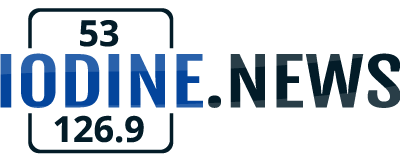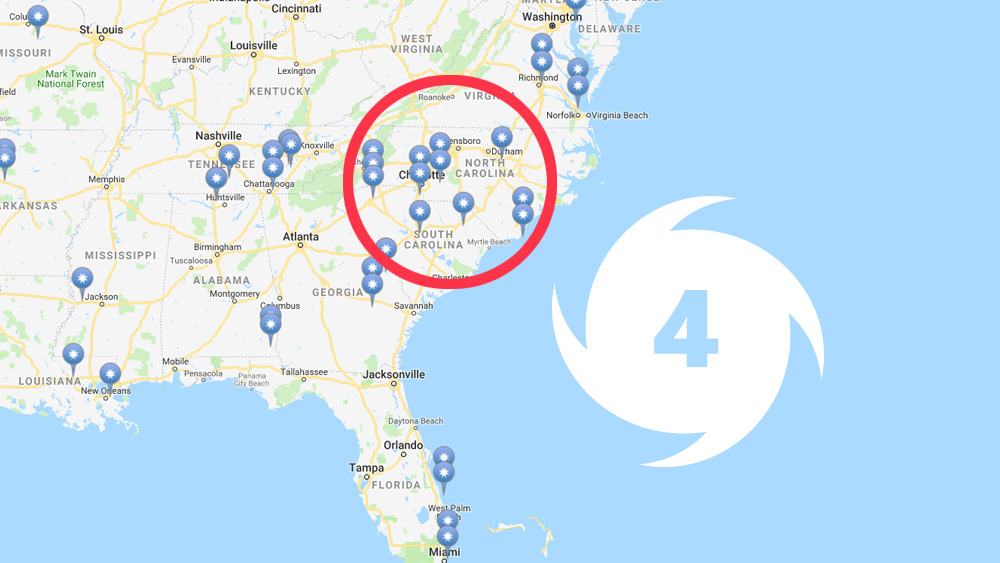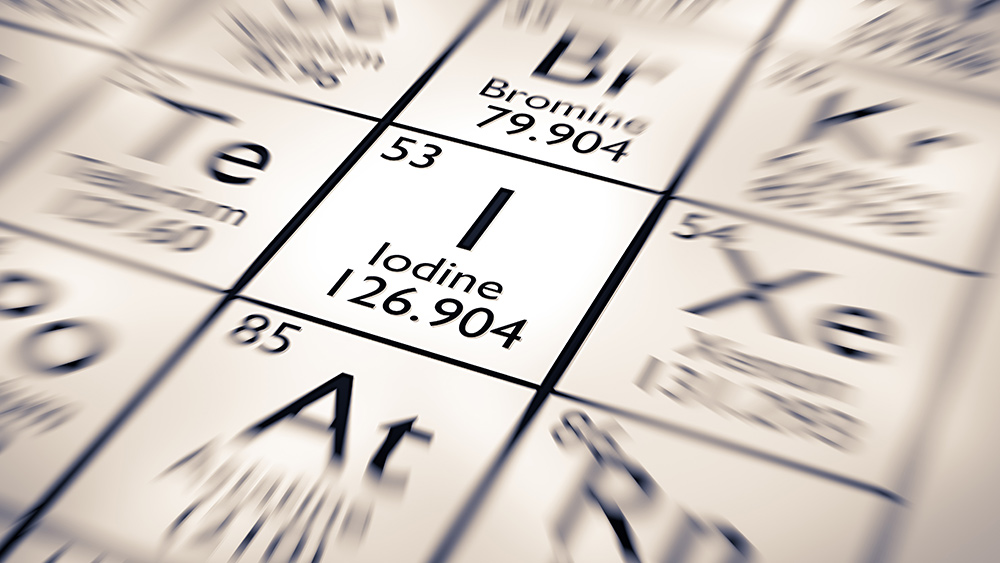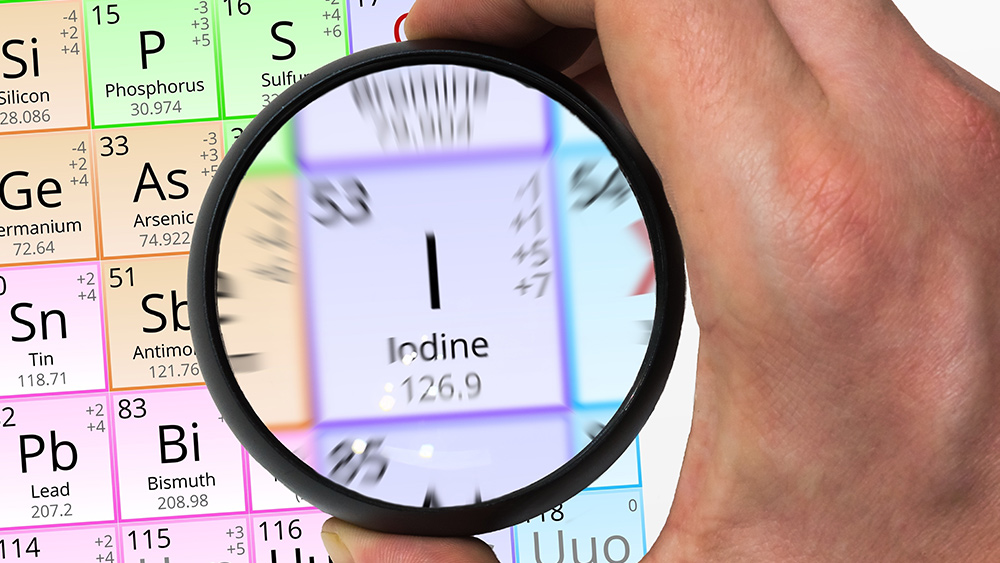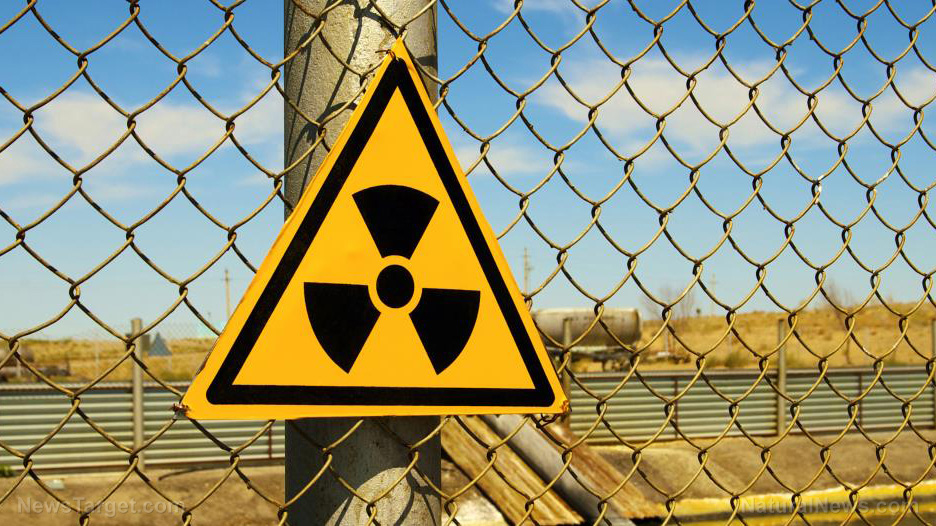Iodine Deficiency — An Old Epidemic Is Back
12/08/2016 / By iodinenews
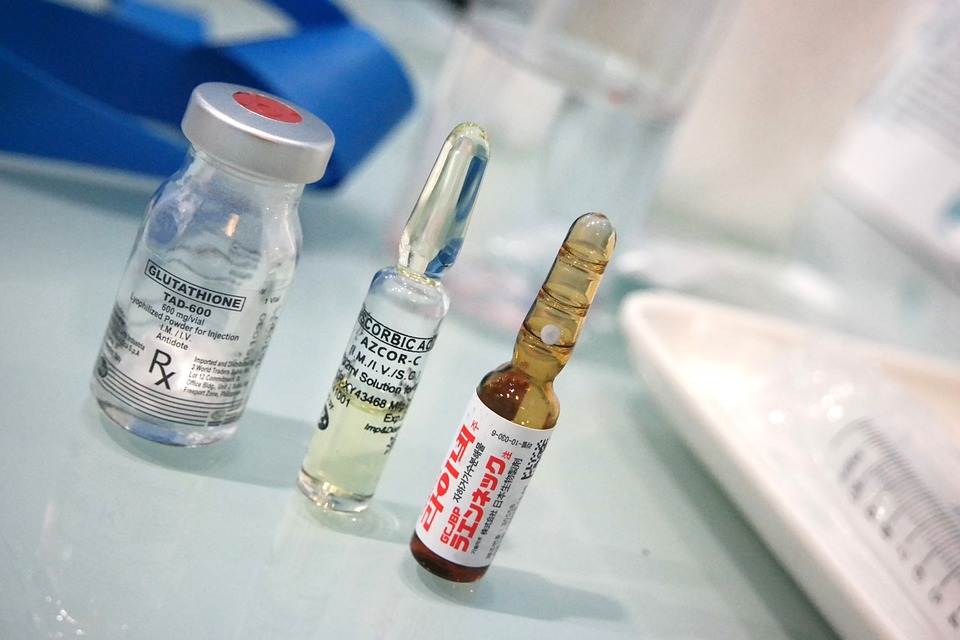
One of the main roles for the mineral iodine is to help manufacture thyroid hormones. And once upon a time in America — especially in the Great Lakes region — there were many cases of goiter, an enlarged thyroid gland caused by iodine deficiency. The iodine/goiter story had a happy ending, however, when manufacturers began adding iodine to salt (“iodized salt”). After that, goiters in the U.S. mostly disappeared.
Article by Jacob Teitelbaum
But the iodine story turns out to have an epilogue. A new epidemic of iodine deficiency has occurred. And it’s bringing a lot more than goiters with it.
Fatigue? Pain? Weight gain? Breast cysts or tenderness? In this article I’ll tell you why you might be at risk for an iodine deficiency, what it might be doing to your health — and an easy way to protect yourself.
Bromide and Bad Medical Advice
There are two main reasons why iodine deficiency may be making a comeback.
Until recently, about 25% of the iodine in the diet was from wheat, because iodine was used in the processing of flour. Now, however, a lot of flour in the U.S. is processed with a chemical cousin of iodine, bromide (potassium bromate), which helps makes flour doughier, rise higher, and gives the loaf a better appearance. But bromide is a double-edged sword: not only has it replaced iodine, it may block the activity of iodine. That’s also true for two more of iodine’s chemical cousins — chlorine and fluoride, both of which are common in drinking water.
There’s another problem with bromide. The International Agency for Research on cancer classified potassium bromate as a Class 2B carcinogen, and it was banned in the U.K. in 1990 and in Canada in 1994. It’s still legal in the U.S., although in 1999 The Center for Science in the Public Interest (CSPI) petitioned the FDA to ban it, saying the agency “has known for years that bromate causes cancer in laboratory animals.”
Iodine deficiency isn’t only about our daily bread — it’s also about our daily salt. Most of the salt used in food processing isn’t iodized. And people are using less and less iodized table salt at home, because of the misguided medical advice (except in those with heart failure) to avoid salt. (People who eat more salt live longer: see Eat Less Salt — and Die?)
The end result is Americans who dine on less iodine. From 1971 to 2001 iodine intakes in the U.S. dropped by 50% (estimated by urine output). Though it fortunately is not continuing to drop, we still have lost half our iodine.
So Why Is This a Big Problem?
Iodine is one of the most important minerals — your body requires it for healthy cellular and metabolic functioning. The book by Dr. David Brownstein, Iodine: Why You Need It and Why You Can’t Live Without It, sums up its importance:
“Iodine is the most misunderstood nutrient. After 12 years of practicing medicine, I can say that it is impossible to achieve your optimal health if you do not have adequate iodine levels. I have yet to see any item that is more important for promoting health than iodine.”
If Dr. Brownstein is right, and I agree that iodine deficiency is a major problem — our drop in iodine intakes might be contributing to many major health problems.
Examples? Iodine deficiency might be contributing to the large increase in thyroid problems being seen clinically. Low iodine can contribute to an increased risk of both underactive and overactive thyroid. And iodine-blocking bromides are implicated in many thyroid disorders — one study showed bromides were 50 times higher in the thyroid tissue of people with thyroid cancer.
Breast cysts and breast cancer. Iodine plays a key role in breast tissue, and women with breast cancer have lower iodine levels in their breast tissue than women without the disease. Women in Japan get much more iodine in their diets — and have a 65% lower risk of breast cancer than U.S. women. The effect of iodine on breast tissue is so marked, that hypothyroid women (who can’t process the mineral well in the thyroid, thereby freeing up more iodine for use in breast tissue) actually have lower levels of breast cancer. I recommend Tri-Iodine 6.25-12.5 mg a day in women with breast tenderness, cysts, or cancer. The benefits can be striking.
Lower levels of iodine may increase the risk of heart disease. For a review of this issue, see Hypothesis: Dietary Iodine Intake in the Etiology of Cardiovascular Disease in the Journal of the American College of Nutrition.
Connection to Chronic Fatigue Syndrome
Low iodine might also contribute to fatigue and CFS. A study showed that people with low body temperature and fatigue felt better and had more energy when they took a daily supplement of 1,500 micrograms (mcg) of iodine (the RDA is 150), though their temperature didn’t rise. It’s reasonable for those with unexplained fatigue, CFS or fibromyalgia to add a Tri-Iodine supplement (6.25-12.5 mg) for three months to see if it helps. You’ll often see a marked increase in energy within the first month.
Low iodine has also been associated with weight gain (see Less Iodine, More Likely To Gain Weight).
How Do You Know Your Iodine Levels Are Low?
Iodine testing isn’t always the best way.
The accuracy of iodine testing hasn’t been confirmed to my satisfaction. Much as we like to have a piece of paper that gives definitive test results, sadly these results are often not reliable (see Lab Testing is NOT Reliable!). I find it works best to treat a person’s symptoms, and see if that helps. I would treat for an iodine deficiency in people who have:
- Breast cysts or tenderness, or breast cancer. I consider these markers for iodine deficiency.
- CFS, fibromyalgia or unexplained fatigue.
- Thyroid disease or thyroid cancer.
- Low body temperature of under 98.0° Fahrenheit.
If you prefer to have lab confirmation of a low iodine level, Dr. Kent Holtorf (Holtorf Medical Group) uses urine iodine testing from NiTek and then treats with iodine if levels are low. He estimates that 50-60% of the population is low, and 20-30% are very low. Dr. Brownstein conducts an iodine-loading test, which is discussed in his book. He finds that 95% of the folks he tests are low. Of course the question with iodine testing is how one defines “low.” Although testing is a reasonable option, I’m not anxious to order a test that doesn’t affect how I treat a person — and I think a good case can be made for treating everyone for three months who falls into one or more of the above four categories.
Supplementing with Iodine
Doctors used to use Lugol’s solution, a mix of iodine and iodide. But it’s messy, irritates the stomach, and can mildly stain teeth. As I mentioned earlier, a much-preferred option is Tri-Iodine from EuroPharma, a combination of molecular iodine, sodium iodide, and potassium iodide, for a total of 12.5 mg (12,500 mcg) of iodine per capsule. Some doctors use more than one capsule a day, but it’s best if you take these higher doses only under the supervision of a holistic physician, because doses over 13,000 mcg a day may suppress thyroid function. There are two other cautions:
- A small percent of those with Hashimoto’s Thyroiditis will occasionally flare when taking an iodine supplement (even in a multivitamin). This usually goes away over time, and the iodine is actually helpful for the condition. And many doctors who use high-dose iodine, such as in Tri-Iodine, report they see less sensitivity in folks with Hashimoto’s who start with a high, rather than a low, dose.
- If you have a known iodine allergy (usually an allergic reaction to the iodine used in x-ray dyes), you shouldn’t take iodine. Having said that, I’ve never seen anyone who had this type of allergic reaction also react to an iodine supplement — but better safe than sorry.
- If it causes acne (this is rare), lower the dose. Also, if it flares severe indigestion (pain in the solar plexus), lower the dose or stop it (also uncommon).
Diet and Lifestyle
There are a higher percentage of centenarians on the island of Okinawa than there are anywhere else in the world — and it’s reported that they ingest between 80 and 200 mcg of iodine daily. I think it’s a good idea for everyone to get at least 150-200 mcg. And there are several ways to make sure you do just that:
- Seafood tends to be high in iodine. An especially rich source is seaweed, such as kelp. This is why the average Japanese women who eats a lot of seaweed gets 12,500 mcg of iodine in her daily diet — and maybe why she’s a lot healthier than the average American woman, who is lucky if she gets 150 mcg daily. It also may be why breast cancer is much less common in Japan than in the U.S., where the breast cancer rate is three times higher than Japan’s!
- If you eat a lot of soy products, cut back — especially unfermented soy (e.g., soy milk, soy cheese, and soy protein added to food). Large amounts of soy can block thyroid function, though this is less of a problem with fermented soy products, like tempeh and tofu.
- If your local water contains fluoride, consider a filter that eliminates it. Avoid bromide, too, when you can. (One unusual source: chemicals added to hot tubs to stop the growth of unwanted bacteria. There are other options available.)
Bottom Line?
For those with CFS/FMS, unexplained fatigue, a low body temperature, difficulty losing weight or breast disease, it’s reasonable to take an iodine supplement. Take one tablet a day for 90 days (one bottle if using Tri-Iodine, as I recommend) — either 6.25 or 12.5 mg a day is fine. After three months, if you feel much better you can stay on the supplement. Or you can stop it and see if your problems worsen, a sign that you still need it. (You may find that one bottle is enough to “fill your tank” and correct your deficiency.)
For everyday maintenance, use the Energy Revitalization System vitamin powder, which supplies 150 mcg of iodine (the RDA).
For those with breast cancer, I would suggest adding a 12.5 mg (12,500 mcg) Tri-Iodine capsule a day to your long-term daily regimen. You might also want to work with a holistic physician, taking up to 5 capsules daily — but these higher doses require monitoring of thyroid function.
Read more at: liveinthenow.com
Tagged Under: hypothyroidism, iodine, thyroid health
